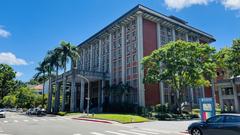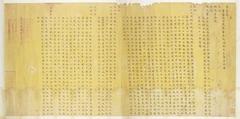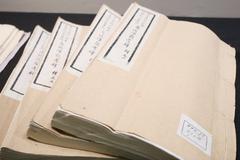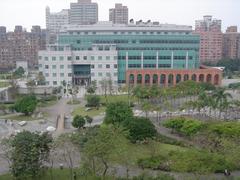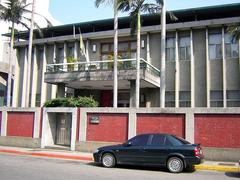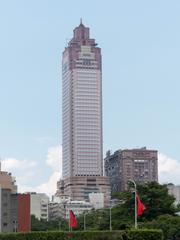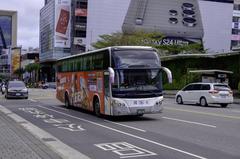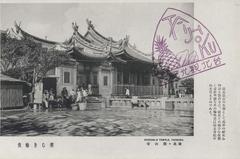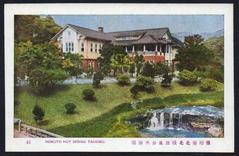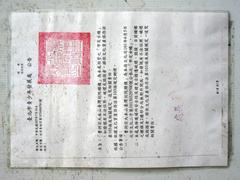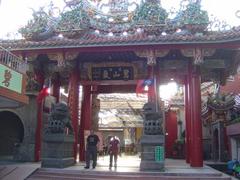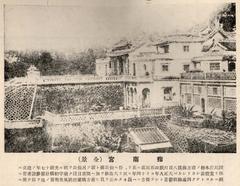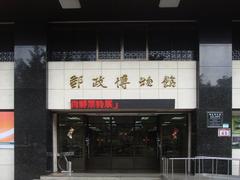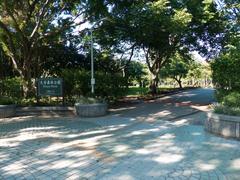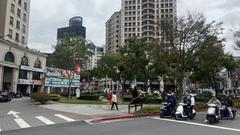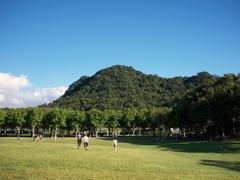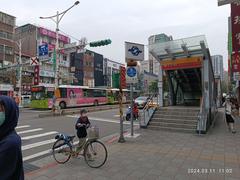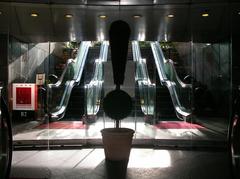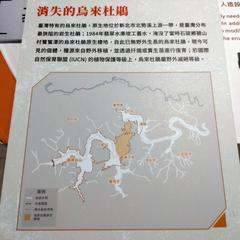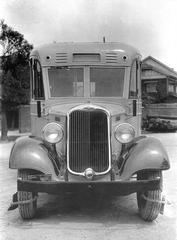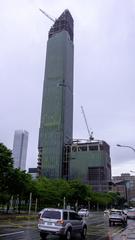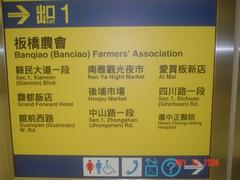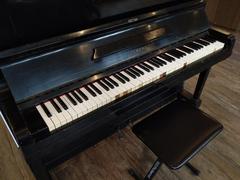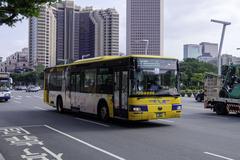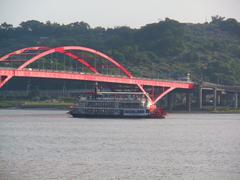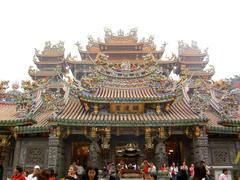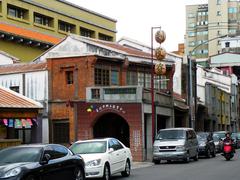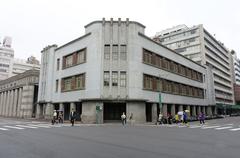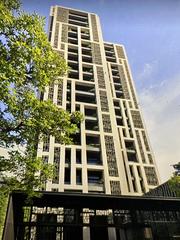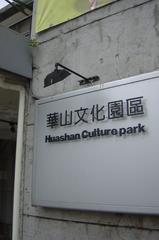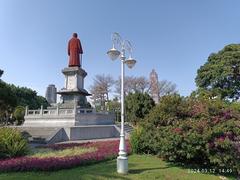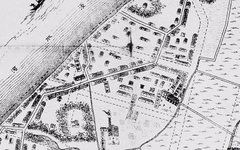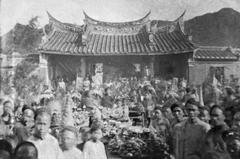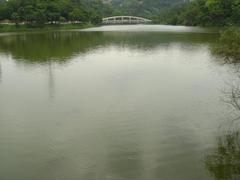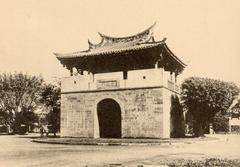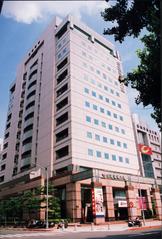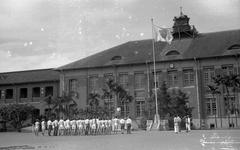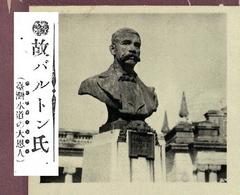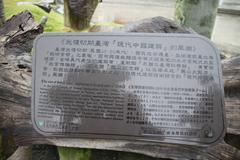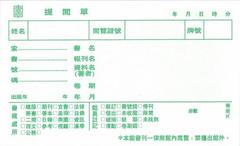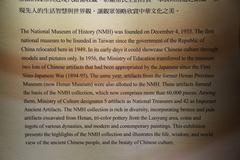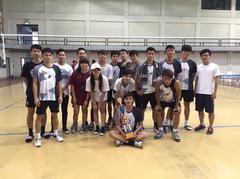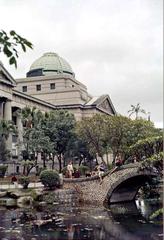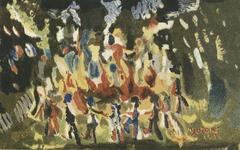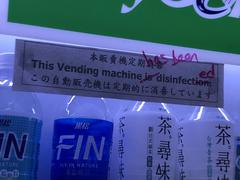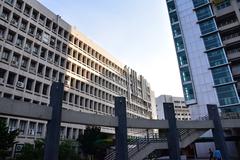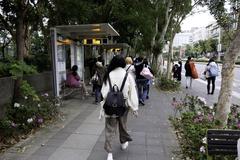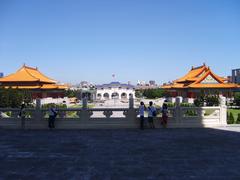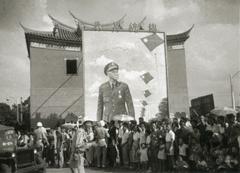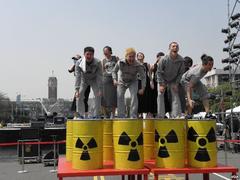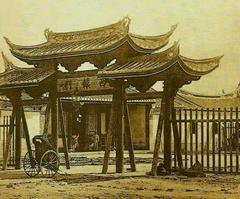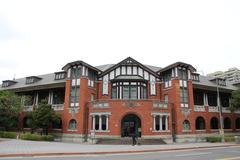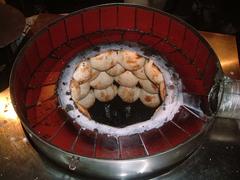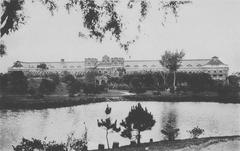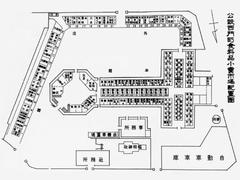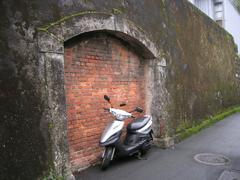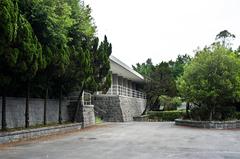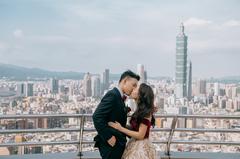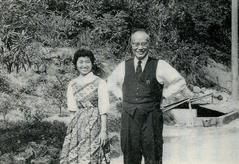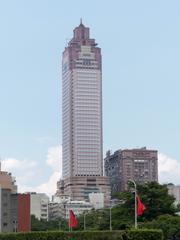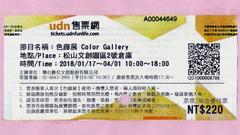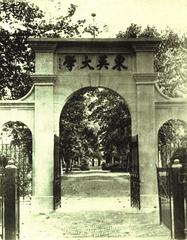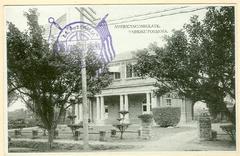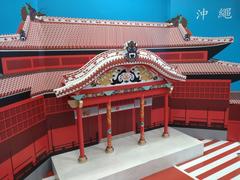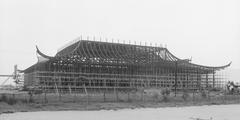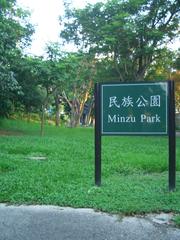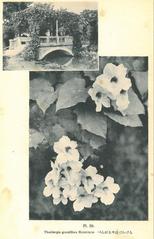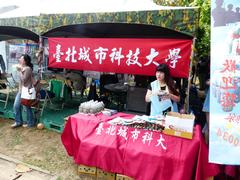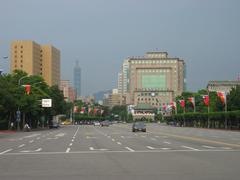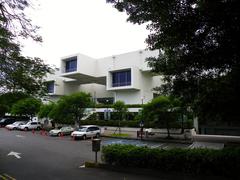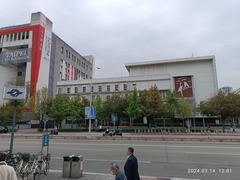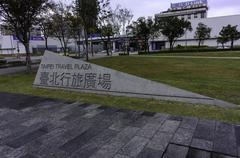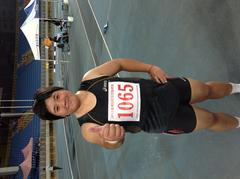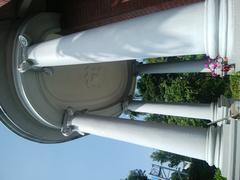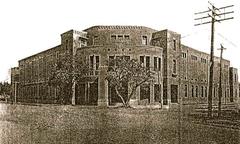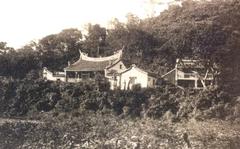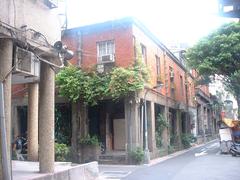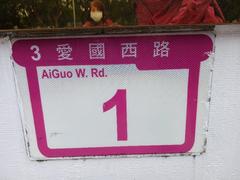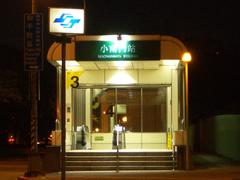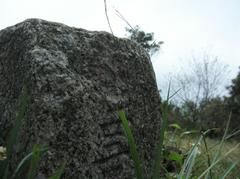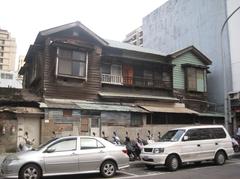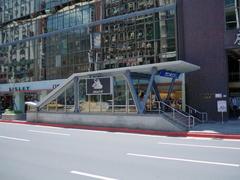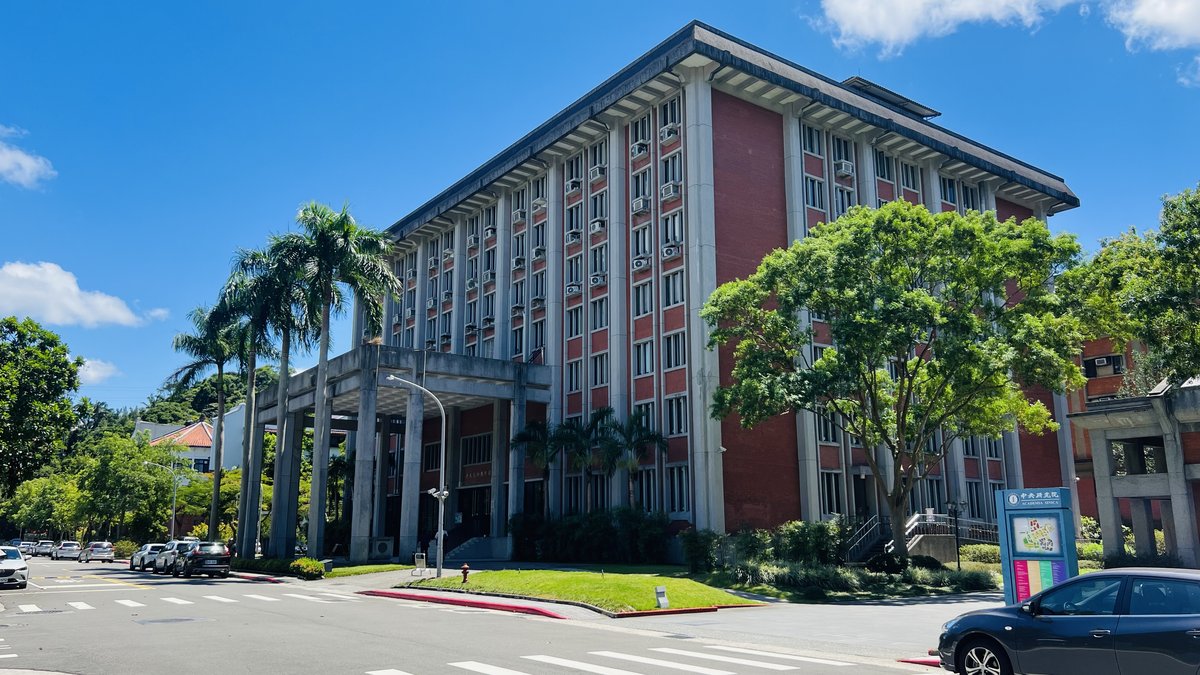
Museum Of The Institute Of History And Philology, Academia Sinica
Museum of the Institute of History and Philology, Taipei: Visiting Hours, Tickets, and Travel Guide
Date: 14/06/2025
Introduction
The Museum of the Institute of History and Philology (IHP), located within Academia Sinica in Taipei, stands as a premier institution for those interested in archaeology, Chinese and East Asian history, and Taiwan’s cultural heritage. Founded officially as a museum in 1986, but with roots going back to 1928 in Nanjing, the IHP Museum preserves and showcases extensive academic collections, offering a unique opportunity for both scholars and the general public to engage with millennia of historical, archaeological, and ethnological treasures. This guide covers everything you need to know to plan your visit—including visiting hours, tickets, highlights, accessibility, and tips for maximizing your experience (IHP Museum Official Site; Academia Sinica History).
Museum Overview and Historical Significance
The IHP Museum is a core part of Academia Sinica, Taiwan’s leading research institution. Its collections and exhibitions bridge rigorous scholarship and public engagement, housing over 120,000 artifacts that span from prehistoric Taiwan and ancient China to ethnological materials from Taiwan’s indigenous peoples. Among its most celebrated holdings are the world’s largest collection of oracle bones, Han Dynasty wooden slips, Qing Dynasty archival documents, and rare ethnological objects (Open House 2023; TIGP Museum Tour).
The museum’s mission encompasses:
- Academic research: Supporting ongoing excavations and historical studies, with many artifacts originating from pioneering fieldwork conducted since the 1920s.
- Public education: Making scholarly resources accessible through exhibitions, guided tours, workshops, and digital platforms.
The IHP Museum not only preserves tangible heritage but also promotes cross-cultural understanding through exhibitions that contextualize Chinese, Taiwanese, and East Asian civilizations.
Visiting Information
Location
- Address: No. 1, Sec. 2, Academia Rd., Nangang District, Taipei, Taiwan
- Campus: Located inside Academia Sinica, easily identifiable by its distinctive blend of red-tile roofs and modern glass architecture (Deep China Travel).
Opening Hours
- Open: Tuesday to Sunday, 9:00 AM – 5:00 PM
- Closed: Mondays and public holidays
- Note: Some references indicate public opening on Wednesdays, Saturdays, and Sundays from 09:30 to 16:30. Always confirm the latest hours on the official museum website.
Admission and Tickets
- Admission: Free of charge for all visitors—no tickets required for general entry.
- Special Exhibitions/Tours: Some special exhibitions and guided tours require advance reservation; group visits should be booked in advance (Tour Reservation).
Accessibility
- Fully wheelchair accessible, with ramps, elevators, accessible restrooms, and available wheelchairs.
- Multilingual resources: Audio guides, signage, and digital kiosks in Chinese, English, and Japanese.
- Free Wi-Fi, lockers, and AED on-site.
Getting There
- MRT: Take the Taipei Metro Blue Line (Bannan Line) to Nangang Exhibition Center Station. Continue by bus or taxi to Academia Sinica.
- Bus: Multiple city buses stop at or near Academia Sinica.
- Car: On-site visitor parking available.
- Train/High-Speed Rail: Arrive at Nangang Station, then transfer by bus or taxi (Museum Visit Info).
Collections and Highlights
Permanent Exhibitions
- Oracle Bones: Housing over 25,000 pieces from the Yin Ruins, offering the largest collection in the world and crucial insights into early Chinese script and Shang Dynasty divination practices.
- Han Dynasty Wooden Slips: Taiwan’s first designated national treasure, these artifacts reveal administrative and daily life in ancient China.
- Bronzeware and Jade: Ritual vessels and intricate carvings from the Shang, Zhou, and subsequent dynasties.
- Tang Dynasty Poetry Scrolls: Rare manuscripts and calligraphy.
- Ethnological Artifacts: Objects representing Taiwan’s indigenous peoples and various East Asian cultures.
- Grand Secretariat Archives: Over 310,000 Qing Dynasty documents detailing imperial administration (Newsletter Sinica).
Thematic and Temporary Exhibitions
- Regularly rotating special exhibitions explore focused historical themes, archaeological discoveries, and interdisciplinary research.
- Collaborative exhibitions with international and domestic institutions expand the scope of display and research (Open House 2023).
Interactive and Educational Features
- Audio Guides: Available in multiple languages for self-guided exploration.
- Guided Tours: Free Mandarin tours every Saturday (2:00–3:30 pm); English tours available by reservation (Tour Reservation; TIGP Museum Tour).
- Workshops and Lectures: Cover topics such as prehistoric pottery, oracle bone script, and I-Ching divination.
- Digital Resources: Online databases provide high-resolution images and scholarly annotations for remote study (Access digital resources).
Architecture and Ambience
- Designed by Da-Hong Wang, the museum combines minimalist modern forms with traditional Chinese elements, featuring light-filled galleries and immersive glass-separated displays that simulate archaeological sites (Newsletter Sinica).
Gardens and Surroundings
- Set within landscaped gardens and ponds, ideal for relaxation and photography.
- The broader Academia Sinica campus includes art exhibitions, cafés, and other museums, making it a full-day cultural destination.
Visitor Experience and Practical Tips
- Duration: Allocate 1.5–2 hours for a standard visit; longer for those with a deep interest in history or archaeology.
- Best Time to Visit: Weekend mornings are recommended for fewer crowds and optimal natural lighting (Deep China Travel).
- Photography: Permitted for personal use (no flash or tripods in galleries); special permission required for academic/commercial use.
- Food and Drink: Not allowed in exhibition spaces; cafés and restaurants are available elsewhere on campus.
- Souvenirs: The museum shop sells books, replicas, and unique gifts (Museum Website).
- Reservations: Not required for individuals; group tours and educational activities should be booked in advance.
Frequently Asked Questions (FAQ)
Q: Is admission free?
A: Yes, general admission is free for all visitors.
Q: What are the museum’s opening days and hours?
A: Generally open Tuesday to Sunday, 9:00 AM – 5:00 PM. Some sources note public hours as Wednesdays, Saturdays, and Sundays (09:30–16:30). Always check here for updates.
Q: Are guided tours available?
A: Yes. Free Mandarin tours are offered every Saturday; English-language tours are available by reservation.
Q: Is the museum accessible for visitors with disabilities?
A: Yes, with full wheelchair access and assistive facilities.
Q: Can I take photos inside the museum?
A: Yes, personal photography is allowed without flash or tripods in most areas.
Q: How do I get there by public transport?
A: Take the Taipei MRT to Nangang Exhibition Center Station and transfer by bus or taxi to Academia Sinica.
Nearby Attractions
- Museum of the Institute of Ethnology: Also on Academia Sinica campus (Sinica Museums).
- Lingnan Fine Arts Museum: Rotating art exhibitions.
- Hu Shih Memorial Hall: Dedicated to the influential Chinese philosopher.
- National Palace Museum: A world-renowned collection of Chinese imperial artifacts.
- Taipei Zoo and Elephant Mountain Trail: For natural and scenic experiences.
Contact and Further Information
- Phone: +886-2-2652-3180
- Email: [email protected]
- Official Website: https://museum.sinica.edu.tw/en/
For the latest updates, exhibition schedules, and event information, always consult the official website before your visit.
Final Tips and Summary
The Museum of the Institute of History and Philology at Academia Sinica is a must-visit for anyone interested in East Asian history, archaeology, or culture. Its world-class collections, educational initiatives, and visitor-friendly amenities ensure a rewarding experience for researchers, students, and travelers alike. With free admission, accessible facilities, and a rich program of exhibitions and events, it stands as a beacon of historical preservation and public scholarship in Taipei (IHP Museum; Academia Sinica Mission).
To make the most of your visit:
- Check the museum website for the latest visitor information and health policies.
- Join a guided tour or attend a workshop for deeper engagement.
- Explore nearby museums and the beautiful Academia Sinica campus for a full cultural day.
- Download the Audiala app for audio tours and follow the museum’s social media channels for updates.
Experience the intersection of scholarship, culture, and history—plan your visit to the Museum of the Institute of History and Philology, Taipei.
References and Further Reading
- Visiting the Museum of the Institute of History and Philology, Academia Sinica: Hours, Tickets, and Historical Insights (2023) (IHP Museum Official Site)
- Museum of the Institute of History and Philology Taipei: Visiting Hours, Tickets, and Historical Insights (2024) (Academia Sinica History)
- Exploring the Museum of the Institute of History and Philology, Academia Sinica: Taipei’s Premier Destination for Archaeology and East Asian History (2024) (Museum Website)
- Visitor Guide: Museum of the Institute of History and Philology (Taipei) Visiting Hours, Tickets, and Attractions (2024) (Museum Visit Info)
- Open House 2023, Academia Sinica (Open House 2023)
- Taiwan International Graduate Program Museum Tour Information (TIGP Museum Tour)
- Newsletter Sinica: Museum Architecture and Collections Overview (Newsletter Sinica)
